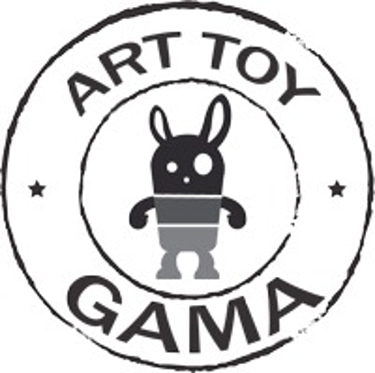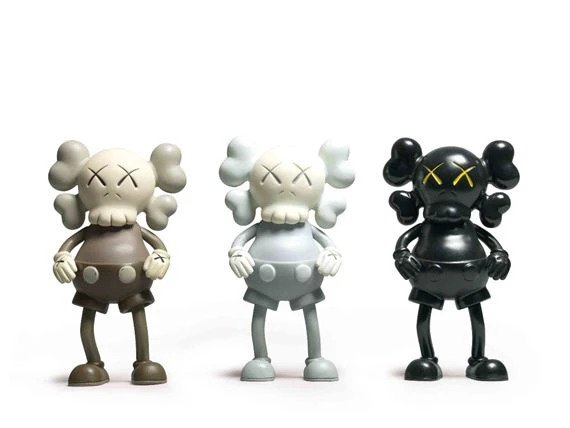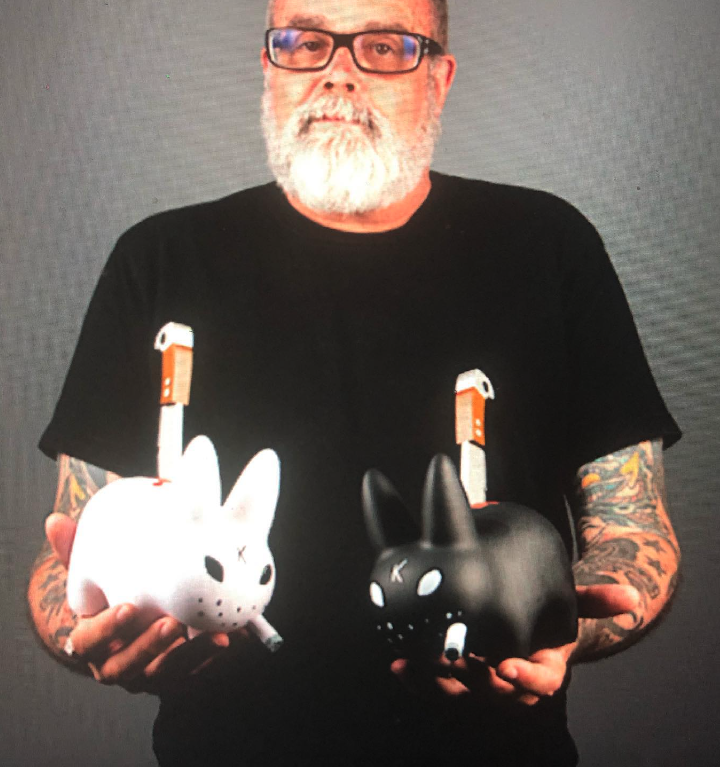We didn’t lose our inner child. We turned it into ArT Toys and More...with purpose.
Art Toys: A Cultural Mosaic with Vinyl Roots #00015 Art Toy Files
From Tokyo to Tumblr. How Global Hybridization Shaped the Art Toy Movement
ART TOY FILES
Sergio Pampliega Campo & Cristina A. del Chicca
Uncovering the Stories, Creators and Culture Behind #ArTToys
An Art Toy Gama Perspective
Some stories are written in ink.
Others are sculpted in vinyl.
The ArT Toy Movement wasn’t born in a gallery or declared by a museum.
It emerged—quietly, rebelliously—at the intersection of multiple worlds: subcultures, youth Movements, generational nostalgia, urban rebellion, and global design.
This wasn’t a singular cultural explosion.
It was an artistic hybridization, a global remix of influences, materials, and philosophies that could only happen in the context of late 20th-century globalization.
What began as underground expression in the streets of Tokyo and the studios of Hong Kong has grown into a universal language: a Movement that reflects, distorts, and redefines the cultures that birthed it.
🌍 The Hybrid DNA of ArT Toys
To understand ArT Toys, we must understand their double nature:
· They are Toys…playful, plastic, referential.
· But they are also Artworks…deliberate, symbolic, layered.
From the very beginning, ArT Toys carried contradiction as a badge of honor.
They combined the collectible with the conceptual, the street with the gallery, the Eastern with the Western.
It’s no accident. It’s history.
🧬 The Global Conditions That Made ArT Toys Inevitable
In the 1980s and 1990s, Japan was experiencing the aftershocks of postwar American influence, mixed with its own deeply rooted visual traditions and a booming economy.
What emerged was a new wave of cultural exports: anime, manga, street fashion, kawaii aesthetics, and DIY toy-making.
Meanwhile, manufacturing trends shifted.
Production of plastic toys moved from Japan to Hong Kong, Taiwan, and eventually China.
These industrial flows planted seeds of creativity in the very regions handling the physical making of pop culture.
Artists like Michael Lau, Eric So, and Bounty Hunter didn’t wait for permission.
They took these materials, this cultural noise, and reinterpreted it…injecting critical thought, identity, and attitude into what had once been mass-market products.
As curator John Wee Tom wrote in The Anatomy of Cool, these artists created nonlinear works, not bound by traditional Art contexts, but deeply embedded in the psychology and rhythm of contemporary life.
They didn’t call it “ArT Toys.”
But they were already playing with the very ideas we now recognize as core to the Movement.
🎨 A Movement Born from Subcultures
The ArT Toy Movement owes its soul to subcultures and artistic outsiders:
Dada’s irreverence.
Punk’s defiance.
Lowbrow’s visual chaos.
Graffiti’s mark-making.
Kitsch’s aesthetic rebellion.
Hip-hop’s cultural remix.
Skateboarding’s anti-establishment DNA.
It also pulls from classical Art, Toy design from the 60s and 70s, anime and cartoons, and the stylized absurdities of Japanese consumerism.
It's not pure. It's not perfect.
It's a messy, beautiful collage of intent, accident, and imagination.
📡 ArT Toys Were Global Before the Movement Had a Name
Even before hashtags, before Instagram, before dedicated shows or books…
ArT Toys were already crossing borders.
Hong Kong. Tokyo. Paris. LA. Seoul, Taipei, San Francisco, New York…
A toy could appear in a flea market, a design shop, or a zine and immediately start rewriting what “Art” meant to someone.
Without needing translation.
This wasn’t just global design; it was global emotion.
A new visual language. A kind of code.
A Memory you didn’t know You had until you saw it on a shelf.
🔥 And Still… It Was Never About Trend.
From the beginning, ArT Toys weren’t about market value.
They were about emotional value. About Dis(Play) …the act of collecting not as possession, but as Memory, rebellion, and meaning.
They questioned the traditional boundaries between “real Art” and “Toy.”
They refused to sit still on a canvas or behind glass.
They demanded interaction.
And today, they still do.
🧠 We didn’t lose our inner child.
We turned it into art with purpose.
At Art Toy Gama, we don’t believe in canonizing or fossilizing this Movement.
We believe in tracing its real paths, the overlooked exhibitions, the artists who broke molds (literally), the collectors who shaped culture from their shelves.
We’re not just documenting the past.
We’re archiving its emotional architecture.
One piece at a time.
One Dis(Play) at a time.
🎯 Explore More Stories Behind the Movement
If you found something familiar in this story—whether a place, a Toy, or a feeling—you’re not alone.
That’s the power of ArT Toys. They reflect us, even when we weren’t looking.
· 📩 Want stories that make collecting feel personal again?
→ Sign up to the Newsletter
· 🛒 Ready to collect with purpose, not just preference?
→ Explore the Shop
The First and Only Art Toy Newsletter Society in the World here: https://emails.arttoygama.com/l/email-subscription
📓 This post is adapted from an original story first published on our Tumblr blog in May 2016. We kept the truth. We just sharpened the edges.
Art Toys. Paintings. Fine Art Prints. Not what You expect.
Real collectors don't follow trends—they redefine them
We didn’t lose our inner child. We turned it into Art.
You collecting, or just hoarding what the algorithm spoon-feeds you?
contact
© 2025. All rights reserved.




